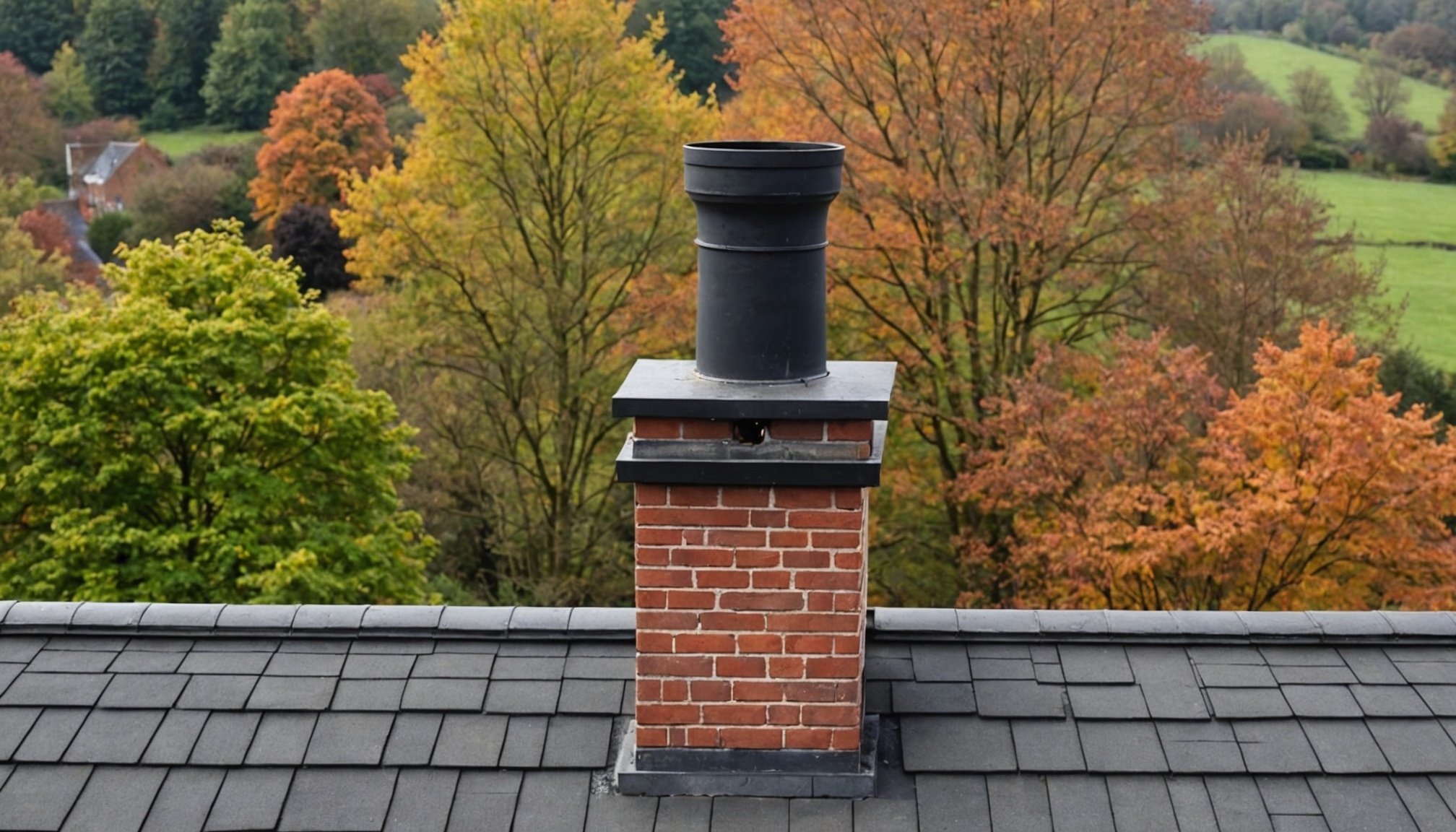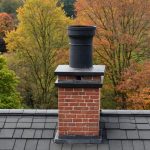Importance of Chimney Maintenance
A well-maintained chimney plays a crucial role in home safety and efficiency. It ensures that harmful gases like carbon monoxide safely exit your home while also enhancing the performance of your heating system. If chimney maintenance is neglected, it can result in blockages, accumulation of creosote, and even chimney fires, posing significant risks to household safety.
Overview of the Role of Chimneys
Chimneys facilitate proper ventilation by allowing smoke and fumes to escape. This not only maintains air quality but also optimises the heating efficiency of fireplaces and stoves. A clean and clear chimney prevents backdrafts, where smoke is pushed back into the living spaces, ensuring safety.
Have you seen this : Revitalize your uk home office: clever strategies to reduce eye strain and boost natural light
Consequences of Neglecting Maintenance
Failing to conduct regular chimney maintenance can lead to deterioration. Creosote, a highly flammable substance, can build up, increasing fire risk. Also, unaddressed structural damage may escalate to costly repairs.
Benefits of Regular Inspections
Routine inspections and cleaning prevent these issues, ensuring the efficiency and longevity of the chimney. Professional evaluations can catch early signs of wear, allowing for timely interventions to maintain safety standards. Regular upkeep also contributes to stable heating performance, effectively securing your home.
Also to read : Elevate your city living: the ultimate guide to crafting a sustainable rooftop garden for uk apartments
Essential Maintenance Techniques
Maintaining your chimney effectively requires understanding key techniques such as cleaning and inspection.
Routine Cleaning Processes
Routine cleaning is essential for maintaining chimney performance. It’s recommended to clean your chimney at least once a year, with more frequent cleanings if the fireplace is used regularly. Removal of soot and creosote is crucial as their buildup can lead to blockages that impact efficiency and pose fire hazards. Brushes with extendable rods can help reach deeper into the flue for effective residue removal. Always ensure to wear protective gear during the process for safety.
Tools Needed for Maintenance
A set of specific tools will make maintenance easy and effective. Chimney brushes, vacuum cleaners, and flashlights are essential. The brushes come in different sizes, so choosing one that fits your chimney is important for thorough cleaning. A high-powered vacuum helps remove loose particles, and a flashlight aids in spotting signs of wear and tear. For inspections, binoculars can be used for assessing the chimney’s exterior condition.
Signs of Wear and Tear
Detecting signs of wear and tear early can prevent costly repairs. Look for cracks, rust, or any structural damage during inspections. Prompt attention to these issues ensures chimney safety and prolongs its lifespan.
Common Issues and Troubleshooting
Maintaining a chimney is essential for home safety and efficiency, but issues can still arise. Understanding these problems helps in effective troubleshooting and repair.
Identifying Blockages
Blockages are common and can result from debris, animal nests, or creosote buildup. Signs of blockages include smoke filling the room or reduced fire efficiency. Regular inspections and using a chimney cap can prevent these occurrences by keeping debris out and maintaining the chimney’s efficiency.
Understanding Odor Issues
Odor problems often indicate moisture intrusion or a buildup of soot and creosote. Damp smells may suggest leaks, while a burnt odor hints at excessive creosote. To troubleshoot, ensure proper ventilation and periodically clean to keep odors at bay.
Recognizing Structural Damage
Structural damage, such as cracks or leaning, poses serious safety risks. Visual inspections from the ground can reveal such issues, while noticing falling masonry or smoke leakage indoors can also be indicative. Addressing these signs promptly with professional help ensures the chimney remains robust and functional, safeguarding your home effectively.
Safety Measures and Regulations
Ensuring chimney safety is paramount for preventing hazards, and adhering to the UK regulations is essential for homeowners. These regulations outline the critical steps required for maintaining safe chimney operations, such as timely inspections and correct usage of fuel types. Adhering to these safety measures guarantees that chimneys operate efficiently and reduces the risk of incidents.
Safety Tips for homeowners during maintenance begin with wearing appropriate protective gear, such as goggles and masks, to prevent inhalation of soot and debris. Also, using stable ladders and scaffolding when accessing the chimney is crucial for personal safety. Regularly checking for blockages or buildup through inspections can preempt potential fires or operational inefficiencies.
In case of chimney-related emergencies, having a clear plan is vital. Homeowners should place fire extinguishers in easily accessible locations near the fireplace and install smoke detectors to alert occupants at the first sign of trouble. For any sign of unusual smoke patterns, odours, or visible damage, contacting professionals immediately helps mitigate risks. Having emergency numbers readily available ensures swift action, further securing the household from potential chimney-related incidents.
Seasonal Maintenance Checklists
Ensuring your chimney’s performance throughout the year involves a strategic maintenance schedule. A simple seasonal checklist can help maintain its integrity and functionality, enhancing both safety and efficiency.
Winter Preparation Considerations:
- Inspect the chimney for any debris or blockages that may have accumulated in the off-season.
- Ensure the flue is clear to prevent smoke from entering living spaces.
- Check for cracks or structural issues that may worsen during colder months.
Spring Maintenance Importance:
- Post-winter, review the chimney’s outer structure for damage caused by ice or snow.
- Spring is ideal for a thorough cleaning to remove soot and creosote, reducing fire risk.
- Evaluate the chimney cap for wear, ensuring it efficiently keeps out wildlife and debris.
Regular updates to your checklist ensure comprehensive care, adapting to your chimney’s specific requirements over time. By addressing each season’s unique challenges, homeowners can prevent expensive repairs and safeguard their homes efficiently.
Professional Servicing Options
Understand the benefits of opting for professional servicing when maintaining your chimney, crucial for ensuring it’s both safe and efficient. Professionals possess the skills to conduct thorough chimney inspections, detecting issues early. Consider hiring a professional when you notice persistent problems like smoke entering your home or if the equipment used for DIY cleaning is inadequate.
When to Hire a Professional
Keep an eye out for signs it’s time for professional help. If maintenance has been neglected or your chimney hasn’t been serviced in years, an expert can perform a comprehensive assessment. Additionally, if you’re unsure about the chimney’s structural integrity or suspect significant creosote buildup, it’s wise to consult a pro.
Benefits of Professional Services
A professional sweep can access areas a homeowner might overlook, ensuring comprehensive cleaning and safety. They protect your home from potential hazards, enhancing efficiency and longevity. Their expertise not only addresses current issues but also provides advice on maintaining proper care schedules.
Selecting a Certified Chimney Sweep
Criteria for selecting include verifying certifications and customer reviews. A reputable sweep is certified by national bodies and possesses substantial experience. This ensures you’ll receive quality service with attention to detail, safeguarding your home effectively.
DIY Tips for Homeowners
Engaging in DIY maintenance is a practical way for homeowners to tend to their chimneys while understanding the system better. Start with safe DIY practices by ensuring you wear protective gear such as gloves, masks, and goggles. This shields you from inhaling soot and other harmful particles.
Begin by identifying basic upkeep tasks suitable for self-management. Inspect the chimney for visible blockages or debris lodged at the top, using a flashlight for better visibility. Regularly sweeping away accumulated soot helps maintain your chimney’s efficiency.
Here’s a step-by-step guide for a simple cleaning process:
- Ensure the fireplace is cool and doesn’t pose burn risks before starting.
- Place a plastic sheet around the fireplace to catch falling debris.
- Use a specifically designed chimney brush to scrub away built-up soot and creosote lining the flue walls.
- Vacuum residual particles with a high-powered vacuum.
For more in-depth education, consider resources such as online tutorials, workshops, or guides available at hardware stores. These can provide comprehensive knowledge for competent DIY chimney care in future scenarios. Taking these steps not only boosts your chimney care skills but also enhances home safety effectively.











